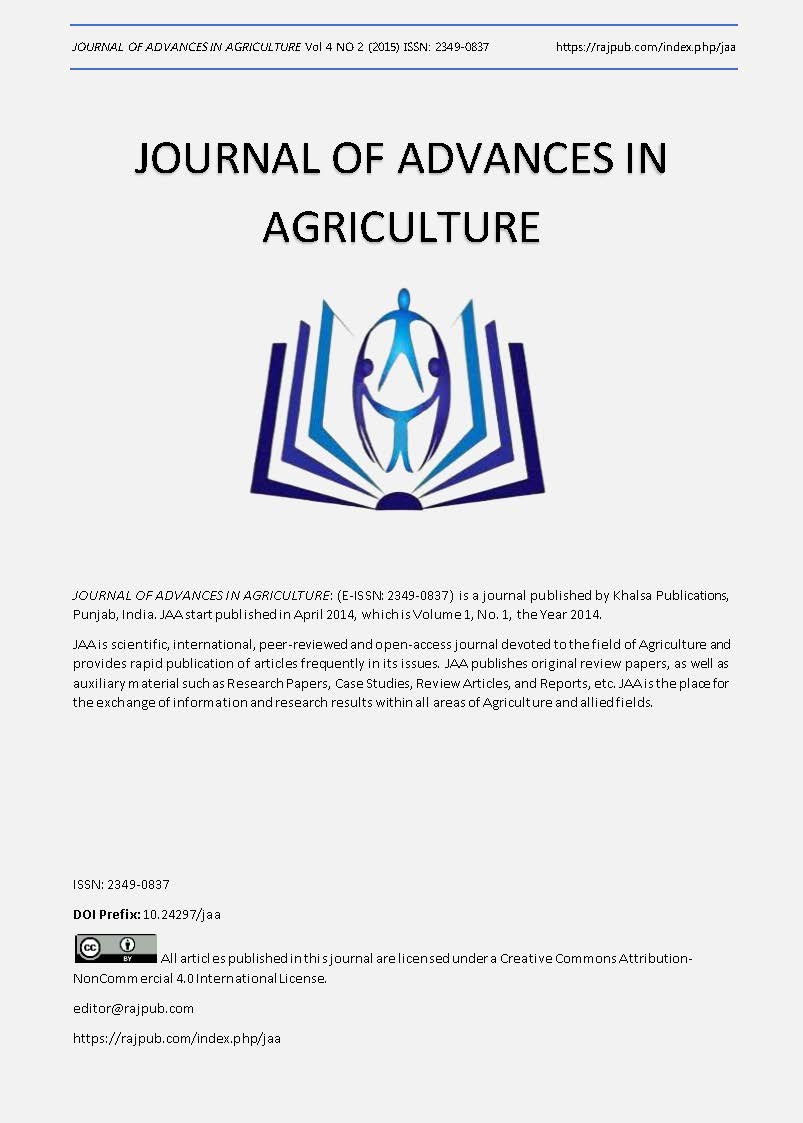Influence of different grape rootstocks on rooting behavior, photosynthetic activities and biochemical constituents in different parts
DOI:
https://doi.org/10.24297/jaa.v4i2.4271Keywords:
Gas exchange parameters, biochemical status, growth parameters, grape rootstocks.Abstract
Different rootstocks were characterized for their various morphological, physiological and biochemical parameters. Significant differences were observed for most of the parameter studied. Rootstocks such as 110-R, 99-R, Dogridge and 1103-P had significant higher contents of carbohydrates, starch, phenols, proteins and reducing sugar. Rootstocks Dogridge, 110-R and Salt Creek also recorded highest rate of photosynthesis and transpiration rate at singe leaf level, which is an important mechanism in overcoming drought tolerance. Phenolic content in the rootstocks such as Dogridge, 110-Rand V. longii, may help in reducing the incidence of major grape diseases in profitable table varieties, if grafted onto these rootstocks. Thus, the physio-biochemical characterization of rootstock may help to identify particular rootstocks that could influence a desired trait in commercial table or wine grape varieties after grafting.In the present investigation, the rootstocks such as 110-R, 99-R 1103-P and Dogridge recorded the highest value for total carbohydrates, phenols, proteins, reducing sugar and gas exchange parameters which may help these rootstocks in overcoming the incidence of important disease and drought tolerance and lead to a better rooting percentage.
Downloads
Downloads
Published
How to Cite
Issue
Section
License
 All articles published in Journal of Advances in Linguistics are licensed under a Creative Commons Attribution 4.0 International License.
All articles published in Journal of Advances in Linguistics are licensed under a Creative Commons Attribution 4.0 International License.




